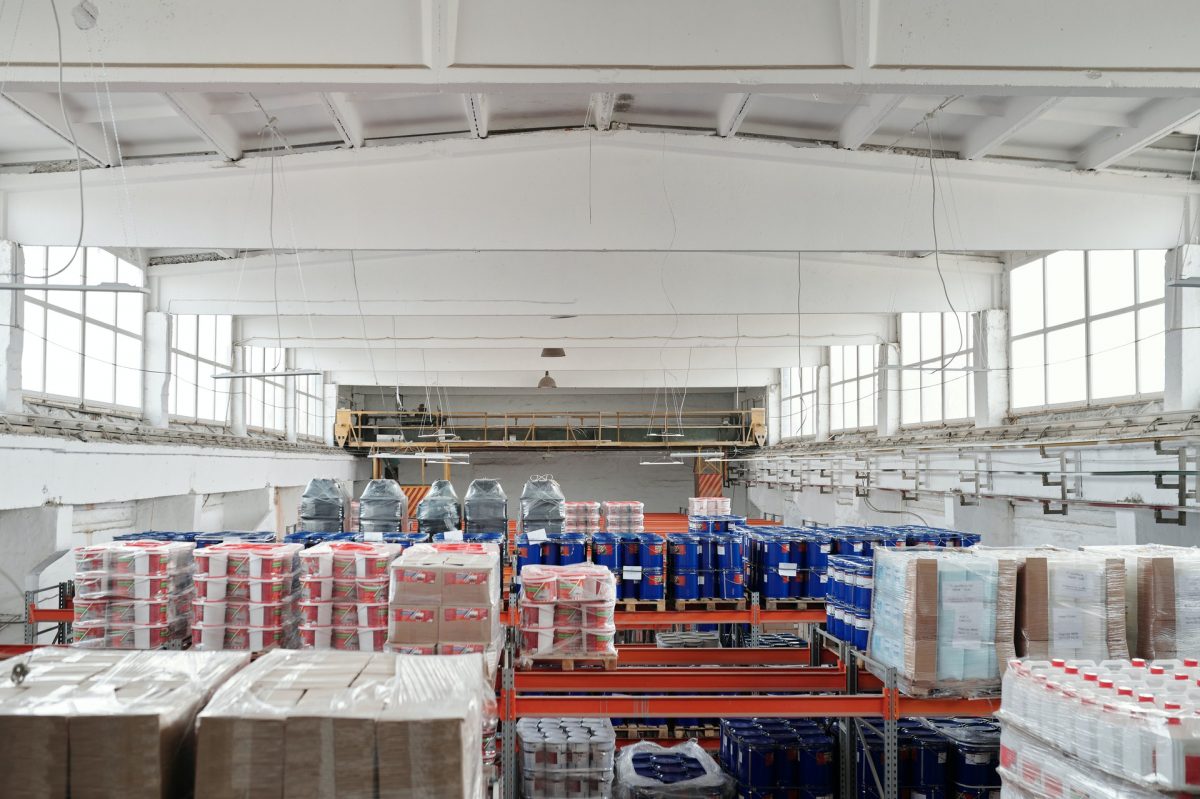Growth in India’s e-commerce sector is the fastest in the world with revenues from the sector expected to reach INR9.0 trillion (USD120 billion) in 2020. 22 The uptick in e commerce led warehousing demand is visible from significant investments in warehousing space made by leading e commerce majors as Amazon and Flipkart . As of July 2020, Amazon plans to set up 10 new fulfilment centres across the country to increase its warehousing capacity by 20%. After this expansion, Amazon will have about 60 fulfilment centres with more than 32 million cubic feet (906,100 cubic metres ) of
storage space spread across 15 states.
E-commerce companies are driving demand for fulfillment centres , which are large warehouses wherein products are sorted and packaged for delivery after they are picked up from sellers.
During the COVID 19 pandemic, the e-commerce ecosystem has witnessed a significant shift, with e commerce players witnessing a steep rise in order volumes. E-commerce players dealing with groceries such as BigBasket and Grofers have reported a five fold rise in sales during the initial phase of lockdown and it is reported that India’s online grocery market sales may reach INR225 billion (USD3.0 billion) in 2020, registering a growth of 76% from 2019.
To cater this growing online consumer demand, e-commerce players are looking to strengthen their supply chain and logistics capabilities. Leveraging accelerated adoption of e commerce by consumers, we recommend local developers and landlords to work closely with professional real estate consultants to upgrade their facilities while securing built to suit and pre-commitments from e commerce companies . We recommend e commerce companies to look for options in the vicinity of Delhi NCR, Hyderabad, Mumbai and Bengaluru.
OCCUPIERS’ STRATEGIES TO ENHANCE ASSET UTILISATION
Short-term leases becomes a trend
We believe that the COVID19 led nationwide lockdown from March 2020 till June 2020, will delay the completion of new warehouses. Our interactions with key developers in the industry suggest a delay of up to two quarters due to the limited availability of labour and supply side disruptions. The delay in delivery of logistics assets is likely to pose a near term challenge for e-commerce players catering to the heightened demand during the approaching Indian festive season starting from October. In order to tide over the immediate requirement, e commerce and third party logistics (3PL) operators have been scouting for short term warehousing space. Media reports suggest that Amazon and Flipkart are actively leasing out short term warehouse space to cater to growing demand from consumers. 23 Anecdotally, industry participants also suggests that developers are receiving considerable enquiries from e commerce companies for temporary, 12 month space in Pune and Bengaluru.
The near term demand from e commerce players is likely to be a win win proposition for select tenants in manufacturing sector. We recommend occupiers who are unable to utilise all their existing warehouse space, especially auto and electronics manufacturers, explore options to sublease their unutilised space for a short period to other tenants. Such sub leasing meets the objective of e commerce players and simultaneously enables manufacturing players to reduce their rental cost burden.
In city warehouses to gain traction e-commerce companies are focussing on same day delivery with the pandemic influenced lockdowns placing greater dependency on e-commerce for food and grocery items. E commerce companies are now trying to stock a larger proportion of inventory closer to their customers’ locations for efficiency and to improve the quality of products upon delivery.
Colliers recommends that e-commerce companies consider securing warehousing locations close to their customer base within the city limits. Over the next 12 months, we believe in city warehouses will gain traction, to be used as small distribution hubs. We expect occupiers to scout for in city warehousing space in the range of 5,000 10,000 sq feet (464 929 sq metres) in major demand hubs such as Mumbai, Bengaluru and Chennai and the NCR. Considering the challenges of last mile delivery due to the lack of such facilities in core city areas, occupiers are now turning to available older/lesser utilized ground level office spaces, service centres , pending minor structural changes.
COVID 19 to accelerate technology adoption in warehousing COVID 19 has increased the focus on contactless environment, as companies look to increase logistics efficiency, and reduce expenses, giving rise to a higher demand for automated technologies. E commerce occupiers are early adapters of technologies such as warehouse management systems
(WMS) for optimizing tasks like locating parcels and choosing the right size and type of packaging.
Over the next few years, we expect greater amalgamation of technologies such as the IoT , radio frequency identification (RFID), automation and robotics to enable companies to more efficiently coordinate inventory management, warehousing, and delivery. These technologies help avoid inventory damage, while creating transparency on throughput to pick and process orders with greater efficiency. The tech driven approach allows suppliers to cater to occupiers’ requirements cost effectively and time efficiently.
Despite the cost implications, automation is transforming supply chains due to growing foreign direct investments into the logistics sector and central government granting infrastructure status to the sector. The recent lockdowns have highlighted the need for automation in supply chain operations, as volumes rise and the availability of labour is disrupted. The Municipal Corporation of Greater Mumbai switched to Robotics Process Automation (RPA) during lockdown with the help of UiPath and EY India to generate bulk e passes for service aggregators supplying essential services to residents of Mumbai.

